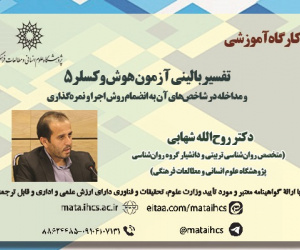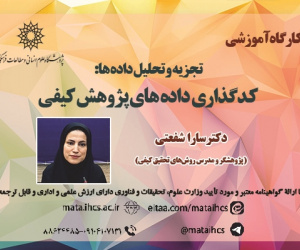زیادت وجود بر ماهیت، پژوهشی در اندیشه ی بهمنیار (مقاله علمی وزارت علوم)
درجه علمی: نشریه علمی (وزارت علوم)
آرشیو
چکیده
مسئله ی زیادت وجود بر ماهیت از کلیدی ترین مباحث در سنت فلسفی اسلامی است. فارابی و ابن سینا در شکل گیری این مسئله نقشی غیرقابل انکار دارند. در میان حکمای پس از ابن سینا اختلافی تفسیری ایجادشده است که آیا مراد شیخ الرئیس از زیادت، صرفاً تغایر منطقی و مفهومی است یا وی علاوه بر تغایر مفهومی به تغایر خارجی نیز قائل است؟ فلاسفه ای مانند میرداماد درمورد وی تفسیر اول را برگزیدند و فلاسفه ای مانند فخر رازی که از شارحان اولیه ی اشارات است تفسیر دوم را راجح دانستند. پژوهش حاضر درصدد این بوده است که جایگاه بهمنیار را، به عنوان بزرگترین شاگرد مکتب ابن سینا، در میان این دو جریان تفسیری جست وجونماید؛ لذا این مقاله با تکیه بر اثر اصلی او، کتاب التحصیل، درپیِ کشف این مسئله برآمده و سعی داشته تا با بررسی عبارات مهم وی و تجمیع شواهد و قرائن متعدد از کتاب التحصیل ارزیابی جامعی ازنظرِ این فیلسوف ارائه کند. ماحصل این پژوهش را می توان این گونه بیان کرد که نمی توان به راحتی نظر مختار بهمنیار را مشخص نمود؛ چه اینکه در میان کلمات او شواهد قابل توجهی بر هر دو تفسیر وجود دارد و نیز اصل محکمی در میان کلمات او نیست تا بتوان آن را به عنوان نظریه ی اصلی وی تلقی کرد و سایر تعابیر او را به عنوان متشابهات به آن اصل محکم ارجاع داد.Distinction between Existence and Essence; A study in Bahmanyar's Thought
The issue of the distinction between existence and essence is one of the most important topics in the Islamic philosophical tradition. Farabi and Avicenna have played an undeniable role in the formation of this issue. Among the philosophers after Avicenna, there has been a difference of interpretation regarding whether Avicenna's distinction is merely a logical and conceptual one, or whether he also considers it to have an external, ontological dimension in addition to its conceptual aspect. Philosophers like Mirdamad have presented the first interpretation of Avicenna, while philosophers like Fakhr al-Razi, one of the early commentators of the Isharat , have presented the second interpretation of Avicenna. The present study aims to determine the position of Bahmanyar, the most prominent student of Avicenna's school, within these two interpretative groups. Therefore, this article, relying on his main work, Al-Tahsil , seeks to explore this issue and attempts to present a comprehensive evaluation of this philosopher by examining his key expressions and gathering numerous pieces of evidence and clues. The result of this research can be stated as follows: It is not easy to determine Bahmanyar's opinion, as there is significant evidence supporting both interpretations in his writings. Moreover, there is no fundamental principle in his works that can be identified as his main theory, nor can his other ambiguous interpretations be attributed to any such firm principle.








